Mary Kay Carson's Blog, page 5
August 6, 2018
Cut A Silhouette, An Old-fashioned Art Form
by Brandon Marie Miller
The art of creating a silhouette has been around a long time, but was most popular in the 1700s and early 1800s. A silhouette, cut from dark paper, shows a person as a solid shape, one color, usually in profile.
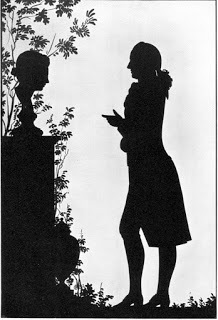
Sitting for an artist who brushed oil paint onto canvas took time and was an extravagance most people could not afford. A silhouette, however, also called a "shade," "profile," or "shadow portrait," took only minutes to create and was cheap enough for the masses to buy. The name "silhouette" comes from the French finance minister, Etienne de Silhouette, who relaxed cutting images out of paper. He also liked things done cheaply. His name soon stuck to this inexpensive form of portraiture.
Expert silhouette artists could eye a person's profile and snip away at the black paper until the image remained. Other artists used a light and a screen to cast a shadow of the subject. They traced the outline and cut it out.
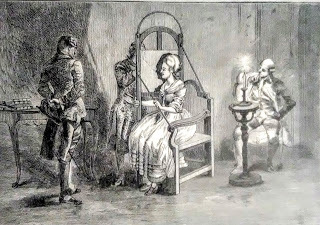
Silhouettes remained a popular means of creating portraits until photography began taking over in the 1840s. This activity comes from my book, George Washington for Kids, His Life and Times.
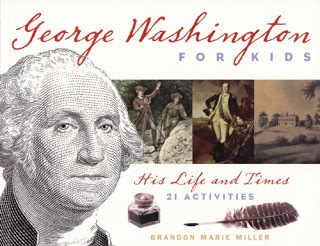
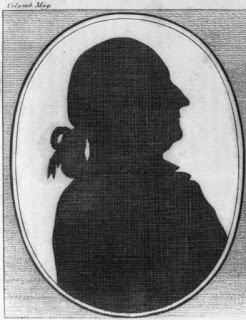 Silhouette of George Washington
Silhouette of George Washington
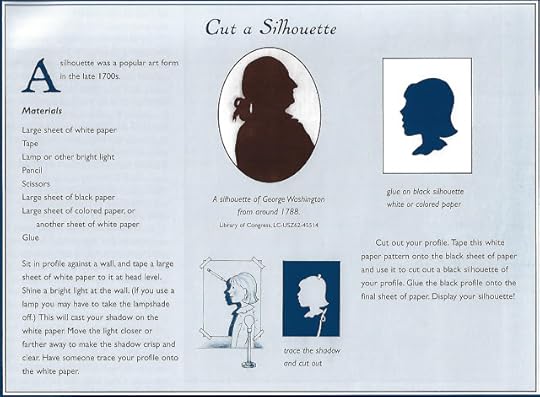
Published on August 06, 2018 11:13
July 4, 2018
Embrace Your Inner Inventor
by Mary Kay Carson
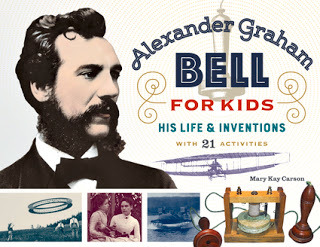 Buy from Books 'N' More and get a discount!I'm proud to announce the release of my newest book, Alexander Graham Bell for Kids: His Life and Inventions with 21 Activities.
Buy from Books 'N' More and get a discount!I'm proud to announce the release of my newest book, Alexander Graham Bell for Kids: His Life and Inventions with 21 Activities.
Alexander Graham Bell was a man of many interests and talents. While famous for inventing the telephone, Bell also...
invented an improved phonograph that Thomas Edison had to buy the patent for in order to build a usable product.worked with early airplane inventors Glenn Curtiss and Samuel Langley and competed with the Wright Brothers.attempted to save President Garfield from his fatal gunshot wound with a bullet-finding invention similar to a metal detector.was a pioneering speech teacher to the deaf and a life-long friend and mentor of Helen Keller.emigrated from Scotland with his parents after both his brothers died from tuberculosis.Bell invented and experimented his entire life. A favorite Bell quote is: "The inventor is a man who looks around upon the world and is not contented with things as they are. He wants to improve whatever he sees, he wants to benefit the world."
You and your students can put their own problem solving skills to work. Everyone craves improvement and likes getting problems solved. We all seek better ways of doing things and love new gadgets! What would you invent?
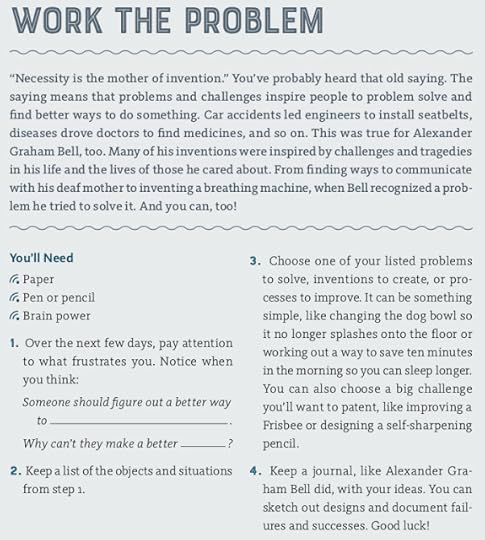
 Buy from Books 'N' More and get a discount!I'm proud to announce the release of my newest book, Alexander Graham Bell for Kids: His Life and Inventions with 21 Activities.
Buy from Books 'N' More and get a discount!I'm proud to announce the release of my newest book, Alexander Graham Bell for Kids: His Life and Inventions with 21 Activities.Alexander Graham Bell was a man of many interests and talents. While famous for inventing the telephone, Bell also...
invented an improved phonograph that Thomas Edison had to buy the patent for in order to build a usable product.worked with early airplane inventors Glenn Curtiss and Samuel Langley and competed with the Wright Brothers.attempted to save President Garfield from his fatal gunshot wound with a bullet-finding invention similar to a metal detector.was a pioneering speech teacher to the deaf and a life-long friend and mentor of Helen Keller.emigrated from Scotland with his parents after both his brothers died from tuberculosis.Bell invented and experimented his entire life. A favorite Bell quote is: "The inventor is a man who looks around upon the world and is not contented with things as they are. He wants to improve whatever he sees, he wants to benefit the world."
You and your students can put their own problem solving skills to work. Everyone craves improvement and likes getting problems solved. We all seek better ways of doing things and love new gadgets! What would you invent?

Published on July 04, 2018 11:28
June 17, 2018
Take Your Pick of Favorite Summer Activities
 Look what grew in my house last summer!
Look what grew in my house last summer!Summer! Time to relax, refresh, and review. In honor of the Summer Solstice coming this week, I’m linking you to several of my favorite summer activities posted since we started Hands-on-Books in 2011!
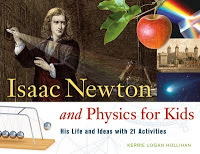 Celebrate #Solstice and Isaac Newton with this fun, delicious project: http://hands-on-books.blogspot.com/2015/06/its-solstice-broil-marshmallows-in-sun.html
Celebrate #Solstice and Isaac Newton with this fun, delicious project: http://hands-on-books.blogspot.com/2015/06/its-solstice-broil-marshmallows-in-sun.html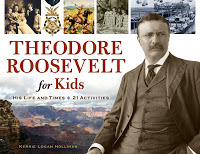 Build a model boat with Theodore Roosevelt http://hands-on-books.blogspot.com/2014/07/sail-away-build-model-boat.html#more
Build a model boat with Theodore Roosevelt http://hands-on-books.blogspot.com/2014/07/sail-away-build-model-boat.html#more 
Watch a beehive rescue! http://hands-on-books.blogspot.com/2017/07/un-bee-lievable-learn-about-buzz.html
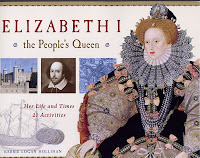
Grow Yourself a Knot Garden with Queen Elizabeth Tudor of England.... http://hands-on-books.blogspot.com/2014/04/grow-yourself-knot-garden.html#more
Published on June 17, 2018 06:13
Summer! Take Your Pck...
 Look what grew in my house last summer!
Look what grew in my house last summer!Summer! Time to relax, refresh, and review. In honor of the Summer Solstice coming this week, I’m linking you to several of my favorite summer activities posted since we started Hands-on-Books in 2011!
 Celebrate #Solstice and Isaac Newton with this fun, delicious project: http://hands-on-books.blogspot.com/2015/06/its-solstice-broil-marshmallows-in-sun.html
Celebrate #Solstice and Isaac Newton with this fun, delicious project: http://hands-on-books.blogspot.com/2015/06/its-solstice-broil-marshmallows-in-sun.html Build a model boat with Theodore Roosevelt http://hands-on-books.blogspot.com/2014/07/sail-away-build-model-boat.html#more
Build a model boat with Theodore Roosevelt http://hands-on-books.blogspot.com/2014/07/sail-away-build-model-boat.html#more 
Watch a beehive rescue! http://hands-on-books.blogspot.com/2017/07/un-bee-lievable-learn-about-buzz.html

Grow Yourself a Knot Garden with Queen Elizabeth Tudor of England.... http://hands-on-books.blogspot.com/2014/04/grow-yourself-knot-garden.html#more
Published on June 17, 2018 06:13
May 1, 2018
Thanks for all Planets, Kepler!
by Mary Kay Carson
Kepler is dying. NASA's famed planet-hunting space telescope is running out of fuel and will soon stop functioning. The workhorse has been discovering planets beyond our solar system for the past nine years. But nothing lasts forever. Once Kepler uses up the last of its fuel, the spacecraft's orbit around Earth will begin to decay. Until then it soldiers on collecting data.
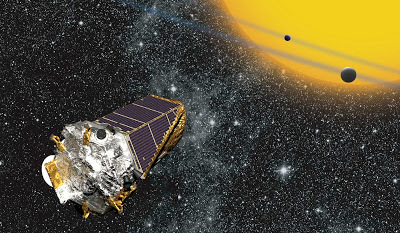 As of today, Kepler's confirmed exoplanet discovery count is 2,343. Nearly as many remain unconfirmed. That's right, we now know about thousands of planets circling other stars that no one knew existed until the small space telescope went to work in 2009. As impressive as the number of new exoplanets is, the stunning variety of these new worlds is just as impressive. There are planets orbiting two stars, hot gas giants like Jupiter orbiting near their suns, and lots of small rocky places, too. Surely one or two are Earth-like.
As of today, Kepler's confirmed exoplanet discovery count is 2,343. Nearly as many remain unconfirmed. That's right, we now know about thousands of planets circling other stars that no one knew existed until the small space telescope went to work in 2009. As impressive as the number of new exoplanets is, the stunning variety of these new worlds is just as impressive. There are planets orbiting two stars, hot gas giants like Jupiter orbiting near their suns, and lots of small rocky places, too. Surely one or two are Earth-like.
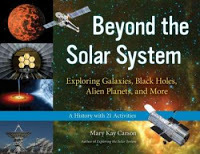 Kepler's successor is already up and running. A small refrigerator-sized satellite went into orbit in April. It's called TESS, short for Transiting Exoplanet Survey Satellite. Like Kepler, it will search for exoplanets by looking for telltale dips in light that occur when planets pass in front of their star. But it will do so much faster and with better cameras. Good hunting, TESS!
Kepler's successor is already up and running. A small refrigerator-sized satellite went into orbit in April. It's called TESS, short for Transiting Exoplanet Survey Satellite. Like Kepler, it will search for exoplanets by looking for telltale dips in light that occur when planets pass in front of their star. But it will do so much faster and with better cameras. Good hunting, TESS!
Students and educators can model how Kepler and TESS search for alien worlds circling distant stars in this activity from my book, Beyond the Solar System . Enjoy! And thanks, Kepler, for all the planets.

Kepler is dying. NASA's famed planet-hunting space telescope is running out of fuel and will soon stop functioning. The workhorse has been discovering planets beyond our solar system for the past nine years. But nothing lasts forever. Once Kepler uses up the last of its fuel, the spacecraft's orbit around Earth will begin to decay. Until then it soldiers on collecting data.
 As of today, Kepler's confirmed exoplanet discovery count is 2,343. Nearly as many remain unconfirmed. That's right, we now know about thousands of planets circling other stars that no one knew existed until the small space telescope went to work in 2009. As impressive as the number of new exoplanets is, the stunning variety of these new worlds is just as impressive. There are planets orbiting two stars, hot gas giants like Jupiter orbiting near their suns, and lots of small rocky places, too. Surely one or two are Earth-like.
As of today, Kepler's confirmed exoplanet discovery count is 2,343. Nearly as many remain unconfirmed. That's right, we now know about thousands of planets circling other stars that no one knew existed until the small space telescope went to work in 2009. As impressive as the number of new exoplanets is, the stunning variety of these new worlds is just as impressive. There are planets orbiting two stars, hot gas giants like Jupiter orbiting near their suns, and lots of small rocky places, too. Surely one or two are Earth-like. Kepler's successor is already up and running. A small refrigerator-sized satellite went into orbit in April. It's called TESS, short for Transiting Exoplanet Survey Satellite. Like Kepler, it will search for exoplanets by looking for telltale dips in light that occur when planets pass in front of their star. But it will do so much faster and with better cameras. Good hunting, TESS!
Kepler's successor is already up and running. A small refrigerator-sized satellite went into orbit in April. It's called TESS, short for Transiting Exoplanet Survey Satellite. Like Kepler, it will search for exoplanets by looking for telltale dips in light that occur when planets pass in front of their star. But it will do so much faster and with better cameras. Good hunting, TESS!Students and educators can model how Kepler and TESS search for alien worlds circling distant stars in this activity from my book, Beyond the Solar System . Enjoy! And thanks, Kepler, for all the planets.

Published on May 01, 2018 15:33
April 6, 2018
Make and Play a Board Game!
by Brandon Marie Miller
We toss dice, spin a wheel, draw a card. Pieces move around a decorated board. People have played board games for thousands of years. Most of us grew up playing them. Each year, new games are invented and old favorites get updates.
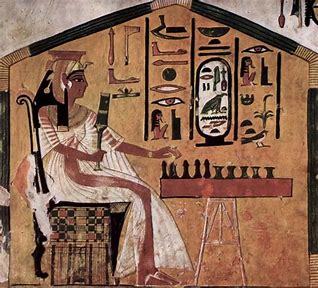 Playing a board game in Ancient Egypt
Playing a board game in Ancient Egypt
Versions of chess, checkers and backgammon have been around hundreds of years. Fans have played games like Monopoly and Sorry for over 80 years now. Candy Land, introduced in 1946, has been updated many times for new generations of kids.
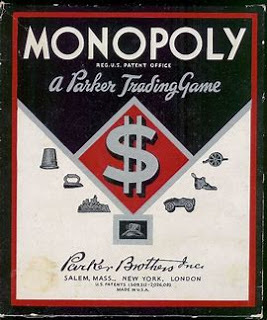 Monopoly, 1930s
Monopoly, 1930s
And from Trivial Pursuit, to Hungry Hungry Hippos and Settlers of Catan, people enjoy the shared experience of sitting around a game board in competition. The Game of Life, first created in 1860, was one of my favorites as a kid. You spun a wheel, moved little cars around the board, earned a salary and faced setbacks. Once when our spinner stuck, my sister and I greased it with a little butter and kept playing!

You may not have heard of the board game, The Royal Game of the Goose, but the game has been played since the 1500s. I included this game in my book THOMAS JEFFERSON FOR KIDS, HIS LIFE AND TIMES. Below are instructions to make the board and the rules for play. Enjoy!
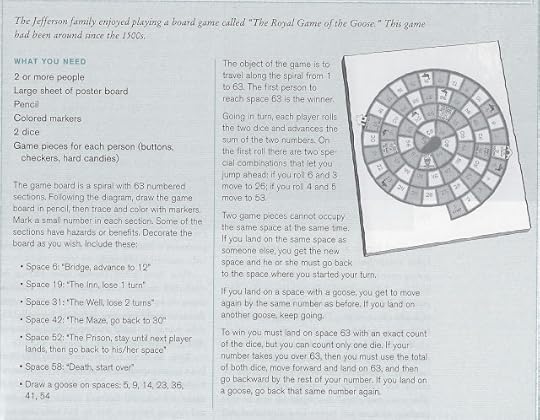
We toss dice, spin a wheel, draw a card. Pieces move around a decorated board. People have played board games for thousands of years. Most of us grew up playing them. Each year, new games are invented and old favorites get updates.
 Playing a board game in Ancient Egypt
Playing a board game in Ancient EgyptVersions of chess, checkers and backgammon have been around hundreds of years. Fans have played games like Monopoly and Sorry for over 80 years now. Candy Land, introduced in 1946, has been updated many times for new generations of kids.
 Monopoly, 1930s
Monopoly, 1930sAnd from Trivial Pursuit, to Hungry Hungry Hippos and Settlers of Catan, people enjoy the shared experience of sitting around a game board in competition. The Game of Life, first created in 1860, was one of my favorites as a kid. You spun a wheel, moved little cars around the board, earned a salary and faced setbacks. Once when our spinner stuck, my sister and I greased it with a little butter and kept playing!

You may not have heard of the board game, The Royal Game of the Goose, but the game has been played since the 1500s. I included this game in my book THOMAS JEFFERSON FOR KIDS, HIS LIFE AND TIMES. Below are instructions to make the board and the rules for play. Enjoy!

Published on April 06, 2018 12:03
February 3, 2018
Chinese or Not, Newton's Laws Rule!
My very first book is for sale in Taiwan! Isaac Newton and Physics for Kids now appears in traditional Chinese.
 Isaac Newton and Physics for Kids (Chicago Review Press, 2009), now appears in English, Croatian, Japanese, and traditional Chinese—with plans for publication in China.
Isaac Newton and Physics for Kids (Chicago Review Press, 2009), now appears in English, Croatian, Japanese, and traditional Chinese—with plans for publication in China.
Newton wrote science’s most important book, the Principia, to roll out twenty years of thought about the universe. He established three laws of motion, steppingstones to the biggest idea in the Principia: the Law of Universal Gravitation.
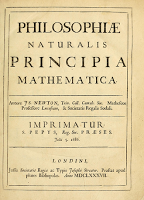 When Isaac Newton looked at the night sky, he grasped that earth, moon, planets, and stars all moved according to the same formula. Isaac Newton “got it”—“it” being gravity. In the Principia, Newton did the math to prove how gravity works.
When Isaac Newton looked at the night sky, he grasped that earth, moon, planets, and stars all moved according to the same formula. Isaac Newton “got it”—“it” being gravity. In the Principia, Newton did the math to prove how gravity works.
As I thumbed through, I checked the activities I wrote to accompany the text ten years ago, including three that demonstrate Newton’s Laws of Motion. Even in Chinese, nothing has changed, just as gravity still holds me in my writing chair and the moon hasn’t crashed into earth. J
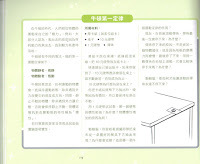
As they’d say in Taiwan, “Wo hun gowshing geo neemun goongshiahng Heiden goongkuh.” (“I’m pleased to share this lesson with you.”) From Isaac Newton and Physics for Kids: His Life and Times....
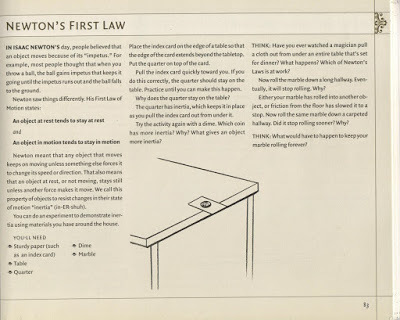
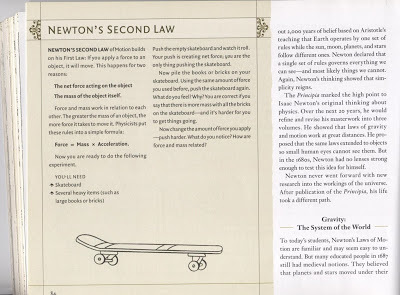
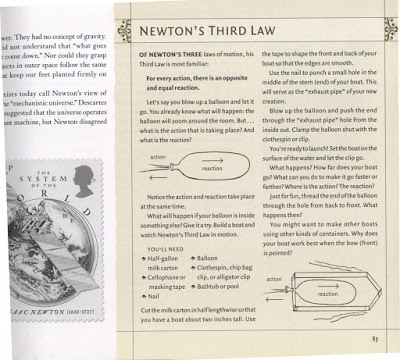
Published on February 03, 2018 11:53
December 31, 2017
Stuck Indoors? Play Blindman's Bluff!
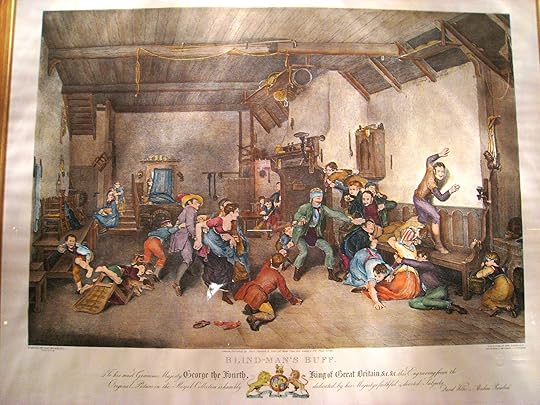 Folks have played blindman's bluff for hundreds of years!
Folks have played blindman's bluff for hundreds of years!Too much winter break? Looking for something to do with your crew? Play a game of blindman’s bluff – much as kids have for years.
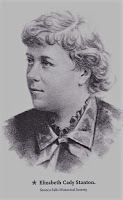 Elizabeth Cady Stanton, an American suffragist and woman of letters, wrote about her girlhood in upstate New York in the 1830s. “The winter gala days,” she said, “are associated...with hanging up stockings and with turkeys, mince pies, sweet cider, and sleigh rides by moonlight.”
Elizabeth Cady Stanton, an American suffragist and woman of letters, wrote about her girlhood in upstate New York in the 1830s. “The winter gala days,” she said, “are associated...with hanging up stockings and with turkeys, mince pies, sweet cider, and sleigh rides by moonlight.”
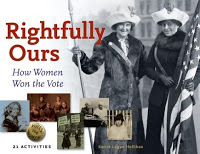
Stanton also played a crowd favorite, blindman’s “buff," “almost every evening during the vacation.” So can you!
From Rightfully Ours: How Women Won the Vote comes this active activity!
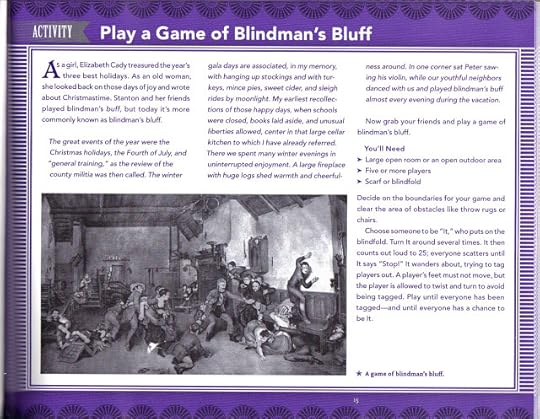
Published on December 31, 2017 05:00
December 1, 2017
Winter (Precipitation) Is Coming!
by Mary Kay Carson
 Winter is coming, folks! Depending on where you live, it may already feel wintery, but its official start is December 21st at 10:28 am CST. Living on a tilted planet means those of us in the Northern hemisphere are deprived of the Sun's warmth for three months. Earth's top half leans away from the Sun, making its path across our sky short and shallow. Brrrr!
Winter is coming, folks! Depending on where you live, it may already feel wintery, but its official start is December 21st at 10:28 am CST. Living on a tilted planet means those of us in the Northern hemisphere are deprived of the Sun's warmth for three months. Earth's top half leans away from the Sun, making its path across our sky short and shallow. Brrrr!
Winter storms bring some of the worst weather around—snow, sleet, freezing rain, fierce winds, and plunging temperatures. Confounding the misery of winter storms is the fact that they are difficult to forecast. The heaviest snowfalls often occur when the air temperature is hovering around freezing. If air the snow falls through changes temperature a few degrees one way or the other, it could end up as rain, sleet, or freezing rain (see diagram below). A mixture of different kinds of precipitation is in fact very likely because the storms that bring snow are often caused by warm fronts sliding over cold air near the ground.
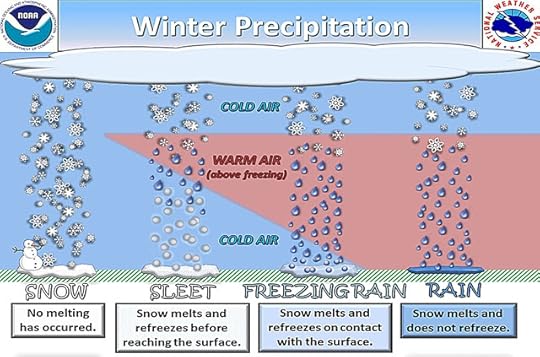
Here’s a fun and simple activity you can do with students to help them explore winter precipitation. It's from my book, Weather Projects for Young Scientists.
------------------------- Sleet vs. Snow -------------------------------------Snow and sleet are both frozen precipitation, but they fall very differently from the sky because of their differences in weight and shape. Snowflakes are large crystals of ice that float down slowly because their large flat shape makes for air resistance, like a parachute. Sleet is bits of heavy solid ice that speed towards the ground like tiny rocks. In this activity, you can discover how weight and shape affects the speed of falling.
Get Together: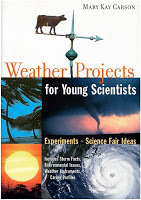 Buy me! uncooked rice rice (or corn) flakes cereal chair newspaper1. Spread newspaper on the floor and set a chair on it. 2. Mix a 1/2 cup of rice and a 1/2 cup of riceflakes in the cupped hands of your friend.3. Ask the friend to stand on the chair, carefully holding the cupped cereal and rice. You need to stand back five or so feet from the chair.4. Have your friend raise her or his hands up high and then let the rice and cereal fall while you watch. Which hit the ground first—the snow-like cereal flakes or sleet-like rice grains? Why?
Buy me! uncooked rice rice (or corn) flakes cereal chair newspaper1. Spread newspaper on the floor and set a chair on it. 2. Mix a 1/2 cup of rice and a 1/2 cup of riceflakes in the cupped hands of your friend.3. Ask the friend to stand on the chair, carefully holding the cupped cereal and rice. You need to stand back five or so feet from the chair.4. Have your friend raise her or his hands up high and then let the rice and cereal fall while you watch. Which hit the ground first—the snow-like cereal flakes or sleet-like rice grains? Why?
 Winter is coming, folks! Depending on where you live, it may already feel wintery, but its official start is December 21st at 10:28 am CST. Living on a tilted planet means those of us in the Northern hemisphere are deprived of the Sun's warmth for three months. Earth's top half leans away from the Sun, making its path across our sky short and shallow. Brrrr!
Winter is coming, folks! Depending on where you live, it may already feel wintery, but its official start is December 21st at 10:28 am CST. Living on a tilted planet means those of us in the Northern hemisphere are deprived of the Sun's warmth for three months. Earth's top half leans away from the Sun, making its path across our sky short and shallow. Brrrr!Winter storms bring some of the worst weather around—snow, sleet, freezing rain, fierce winds, and plunging temperatures. Confounding the misery of winter storms is the fact that they are difficult to forecast. The heaviest snowfalls often occur when the air temperature is hovering around freezing. If air the snow falls through changes temperature a few degrees one way or the other, it could end up as rain, sleet, or freezing rain (see diagram below). A mixture of different kinds of precipitation is in fact very likely because the storms that bring snow are often caused by warm fronts sliding over cold air near the ground.

Here’s a fun and simple activity you can do with students to help them explore winter precipitation. It's from my book, Weather Projects for Young Scientists.
------------------------- Sleet vs. Snow -------------------------------------Snow and sleet are both frozen precipitation, but they fall very differently from the sky because of their differences in weight and shape. Snowflakes are large crystals of ice that float down slowly because their large flat shape makes for air resistance, like a parachute. Sleet is bits of heavy solid ice that speed towards the ground like tiny rocks. In this activity, you can discover how weight and shape affects the speed of falling.
Get Together:
 Buy me! uncooked rice rice (or corn) flakes cereal chair newspaper1. Spread newspaper on the floor and set a chair on it. 2. Mix a 1/2 cup of rice and a 1/2 cup of riceflakes in the cupped hands of your friend.3. Ask the friend to stand on the chair, carefully holding the cupped cereal and rice. You need to stand back five or so feet from the chair.4. Have your friend raise her or his hands up high and then let the rice and cereal fall while you watch. Which hit the ground first—the snow-like cereal flakes or sleet-like rice grains? Why?
Buy me! uncooked rice rice (or corn) flakes cereal chair newspaper1. Spread newspaper on the floor and set a chair on it. 2. Mix a 1/2 cup of rice and a 1/2 cup of riceflakes in the cupped hands of your friend.3. Ask the friend to stand on the chair, carefully holding the cupped cereal and rice. You need to stand back five or so feet from the chair.4. Have your friend raise her or his hands up high and then let the rice and cereal fall while you watch. Which hit the ground first—the snow-like cereal flakes or sleet-like rice grains? Why?
Published on December 01, 2017 03:00
November 1, 2017
Corn-- Thank you Native Americans
by Brandon Marie Miller
Activity: Make a Corn Husk Doll
Long before Europeans ever arrived on American shores Native American farmers had bred many varieties of corn. Farming was typically a woman's job-- a necessary part of her nation's survival. Corn served as an important food for native nations across the land.
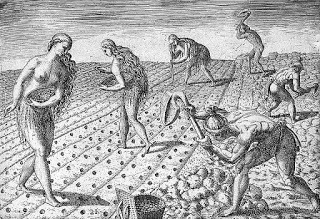 Native American women planting corn, Theodore de Bry, engraver, 1591. [Library of Congress, LC-USZ62-31869]
Native American women planting corn, Theodore de Bry, engraver, 1591. [Library of Congress, LC-USZ62-31869]
The Indian nations of the Powhatan Confederacy were the first confronted by the arrival of English colonists in Virginia. Using tools made of clamshell and deer bone, the Powhatan usually planted corn in the same hole with beans and squash. The three crops, called "The Three Sisters," worked together. Corn stalks supported the climbing bean vines and the beans added nitrogen to the soil. The large spreading leaves of the squash protected corn from other plants. Powhatan women planted the rows in April, May, and June to ensure a long growing season.
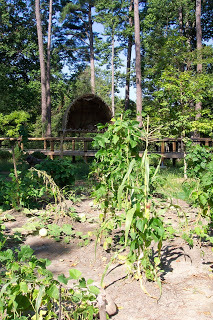 "The Three Sisters" Native American life explored at Jamestown, Virginia
"The Three Sisters" Native American life explored at Jamestown, Virginia
Corn was eaten fresh but the kernels were also parched (dried) then pounded and ground into a coarse whole grain flour-- involving a lot of muscle and hard work! The corn meal could be stored in baskets and pots for food during the winter months. Powhatan women wove corn husks into sleeping mats and shoes, children made corn husk dolls, and dried stalks and corn cobs were burned as fuel. Nothing went to waste.
The early Virginia colonists relied on corn from Native Americans. In times of drought and poor crops, when Indian nations had little to share, the English often took what they wanted with threats and a show of guns. When the English kidnapped Pocahontas in spring of 1613, corn was one of the ransom items they demanded from her father, the paramount leader of the Powhatan Confederacy.
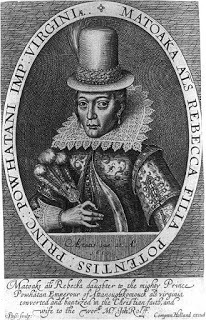 Pocahontas later married an Englishman named John Rolfe. She traveled with him to England in 1616 and sat for this portrait. To learn more about her remarkable life, take a look at my book Women of Colonial America, 13 Stories of Courage and Survival in the New World. [Library of Congress LC-USZ62-8104.]
Pocahontas later married an Englishman named John Rolfe. She traveled with him to England in 1616 and sat for this portrait. To learn more about her remarkable life, take a look at my book Women of Colonial America, 13 Stories of Courage and Survival in the New World. [Library of Congress LC-USZ62-8104.]
Today, people all over the world benefit from the Native American nations that domesticated and bred corn.
Follow this link to learn how to make a corn husk doll.
http://www.snowwowl.com/naartcornhuskdolls2.html
Activity: Make a Corn Husk Doll
Long before Europeans ever arrived on American shores Native American farmers had bred many varieties of corn. Farming was typically a woman's job-- a necessary part of her nation's survival. Corn served as an important food for native nations across the land.
 Native American women planting corn, Theodore de Bry, engraver, 1591. [Library of Congress, LC-USZ62-31869]
Native American women planting corn, Theodore de Bry, engraver, 1591. [Library of Congress, LC-USZ62-31869]The Indian nations of the Powhatan Confederacy were the first confronted by the arrival of English colonists in Virginia. Using tools made of clamshell and deer bone, the Powhatan usually planted corn in the same hole with beans and squash. The three crops, called "The Three Sisters," worked together. Corn stalks supported the climbing bean vines and the beans added nitrogen to the soil. The large spreading leaves of the squash protected corn from other plants. Powhatan women planted the rows in April, May, and June to ensure a long growing season.
 "The Three Sisters" Native American life explored at Jamestown, Virginia
"The Three Sisters" Native American life explored at Jamestown, VirginiaCorn was eaten fresh but the kernels were also parched (dried) then pounded and ground into a coarse whole grain flour-- involving a lot of muscle and hard work! The corn meal could be stored in baskets and pots for food during the winter months. Powhatan women wove corn husks into sleeping mats and shoes, children made corn husk dolls, and dried stalks and corn cobs were burned as fuel. Nothing went to waste.
The early Virginia colonists relied on corn from Native Americans. In times of drought and poor crops, when Indian nations had little to share, the English often took what they wanted with threats and a show of guns. When the English kidnapped Pocahontas in spring of 1613, corn was one of the ransom items they demanded from her father, the paramount leader of the Powhatan Confederacy.
 Pocahontas later married an Englishman named John Rolfe. She traveled with him to England in 1616 and sat for this portrait. To learn more about her remarkable life, take a look at my book Women of Colonial America, 13 Stories of Courage and Survival in the New World. [Library of Congress LC-USZ62-8104.]
Pocahontas later married an Englishman named John Rolfe. She traveled with him to England in 1616 and sat for this portrait. To learn more about her remarkable life, take a look at my book Women of Colonial America, 13 Stories of Courage and Survival in the New World. [Library of Congress LC-USZ62-8104.]Today, people all over the world benefit from the Native American nations that domesticated and bred corn.
Follow this link to learn how to make a corn husk doll.
http://www.snowwowl.com/naartcornhuskdolls2.html
Published on November 01, 2017 10:59



